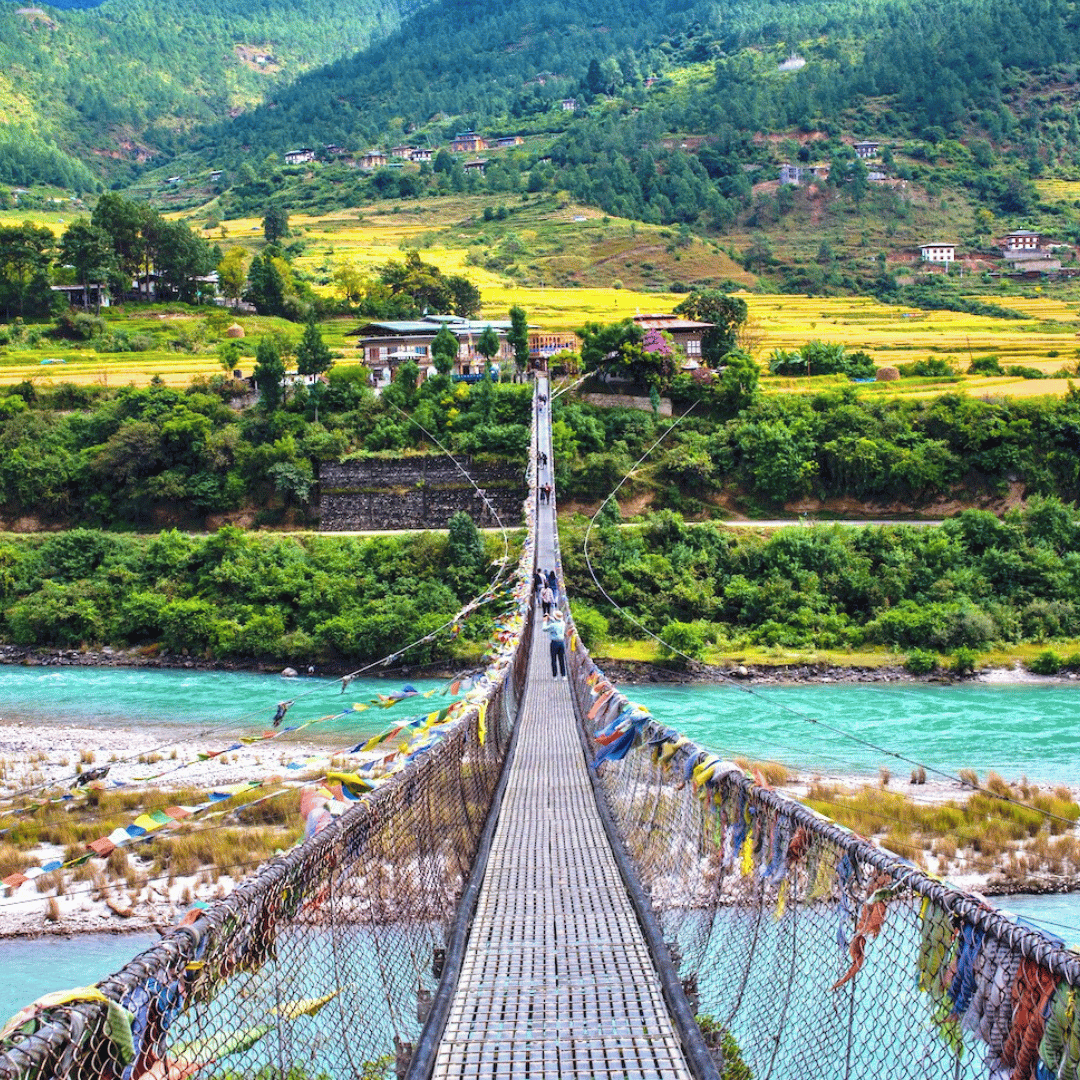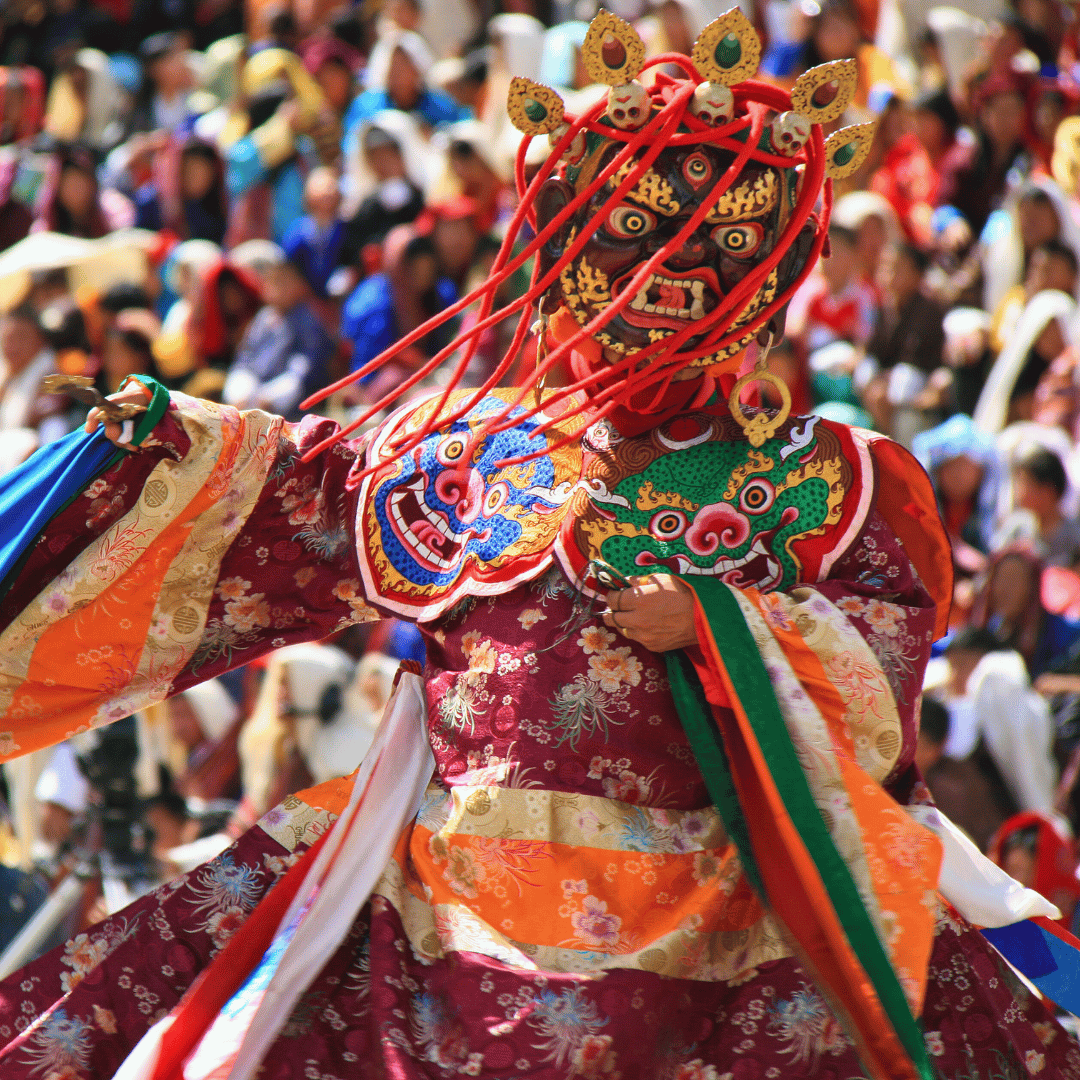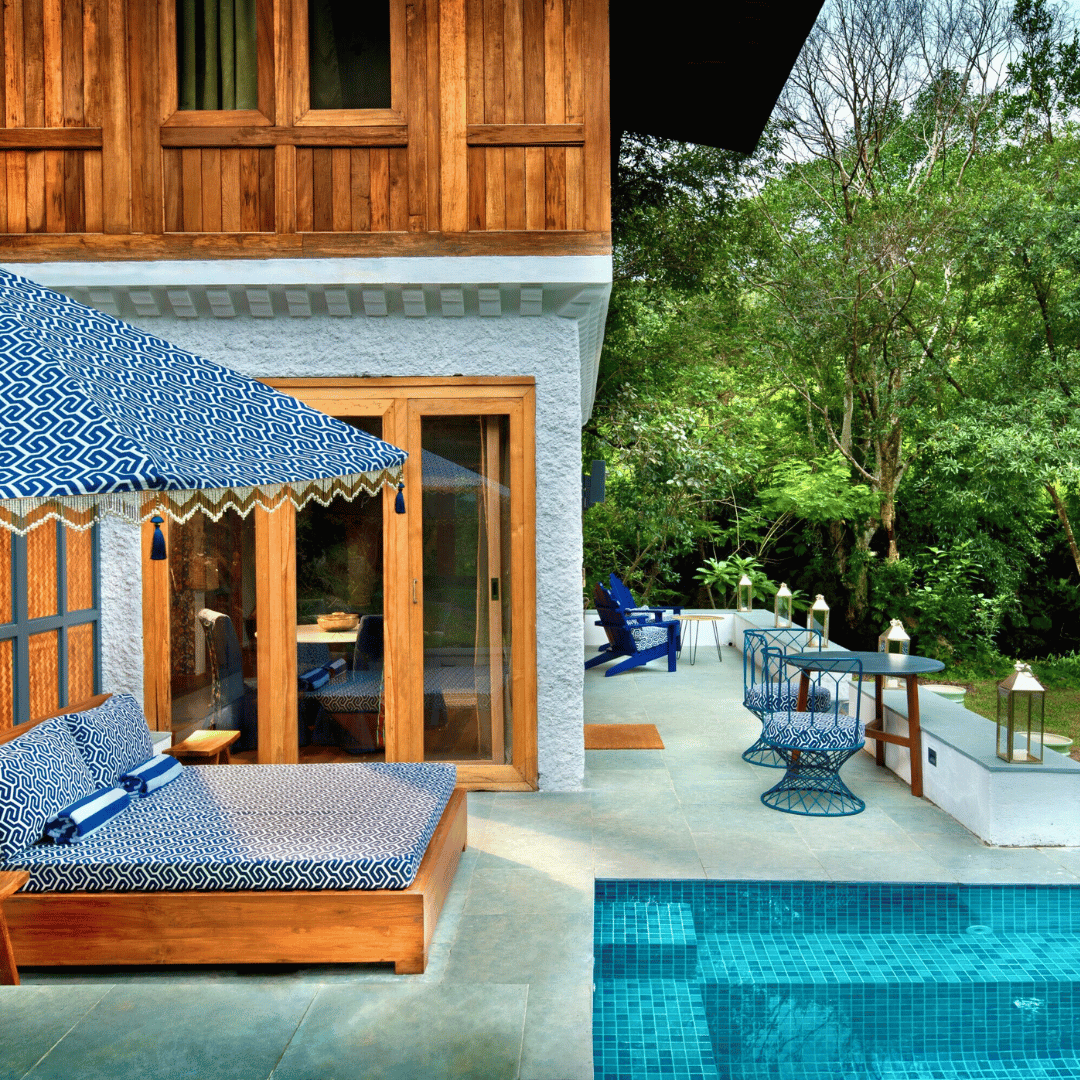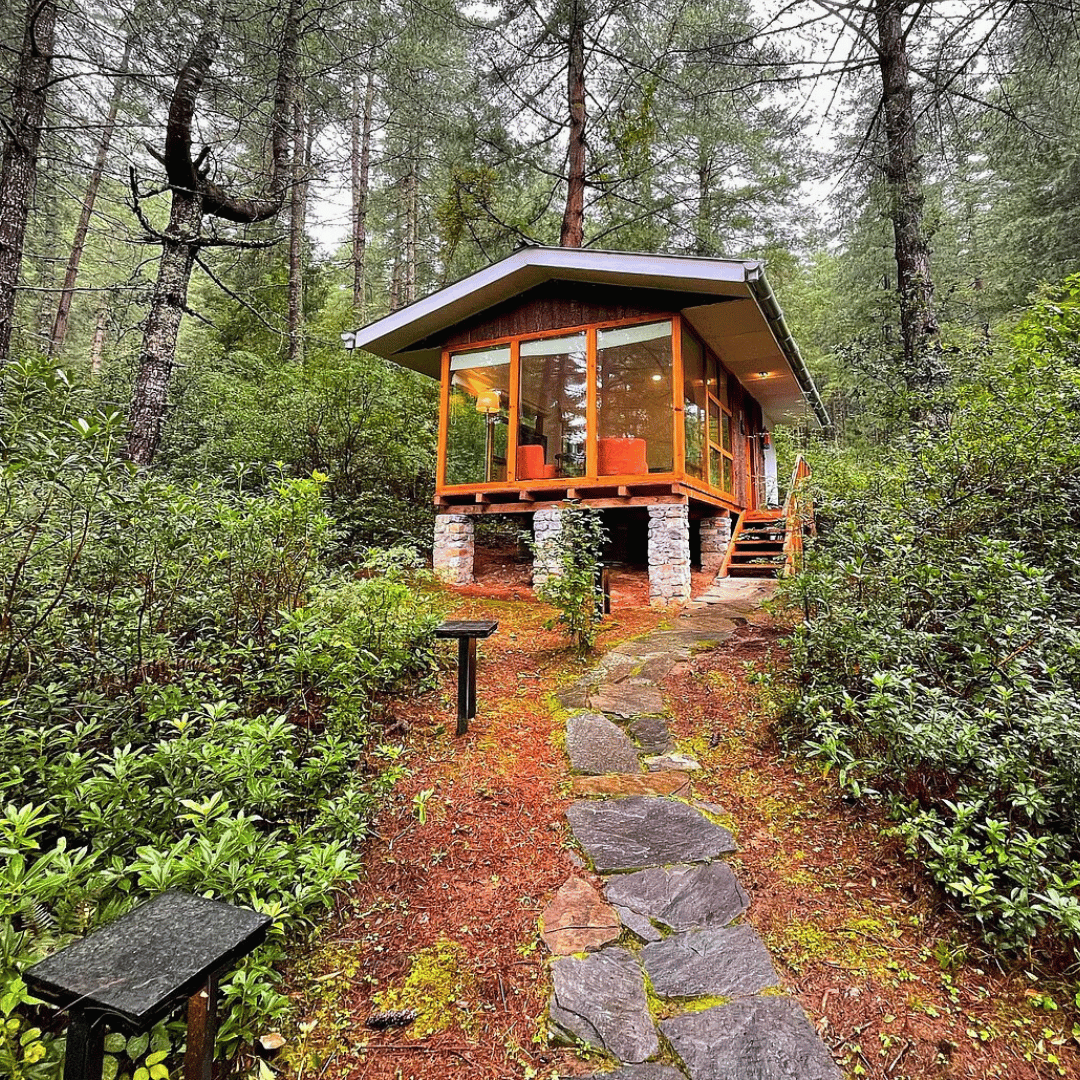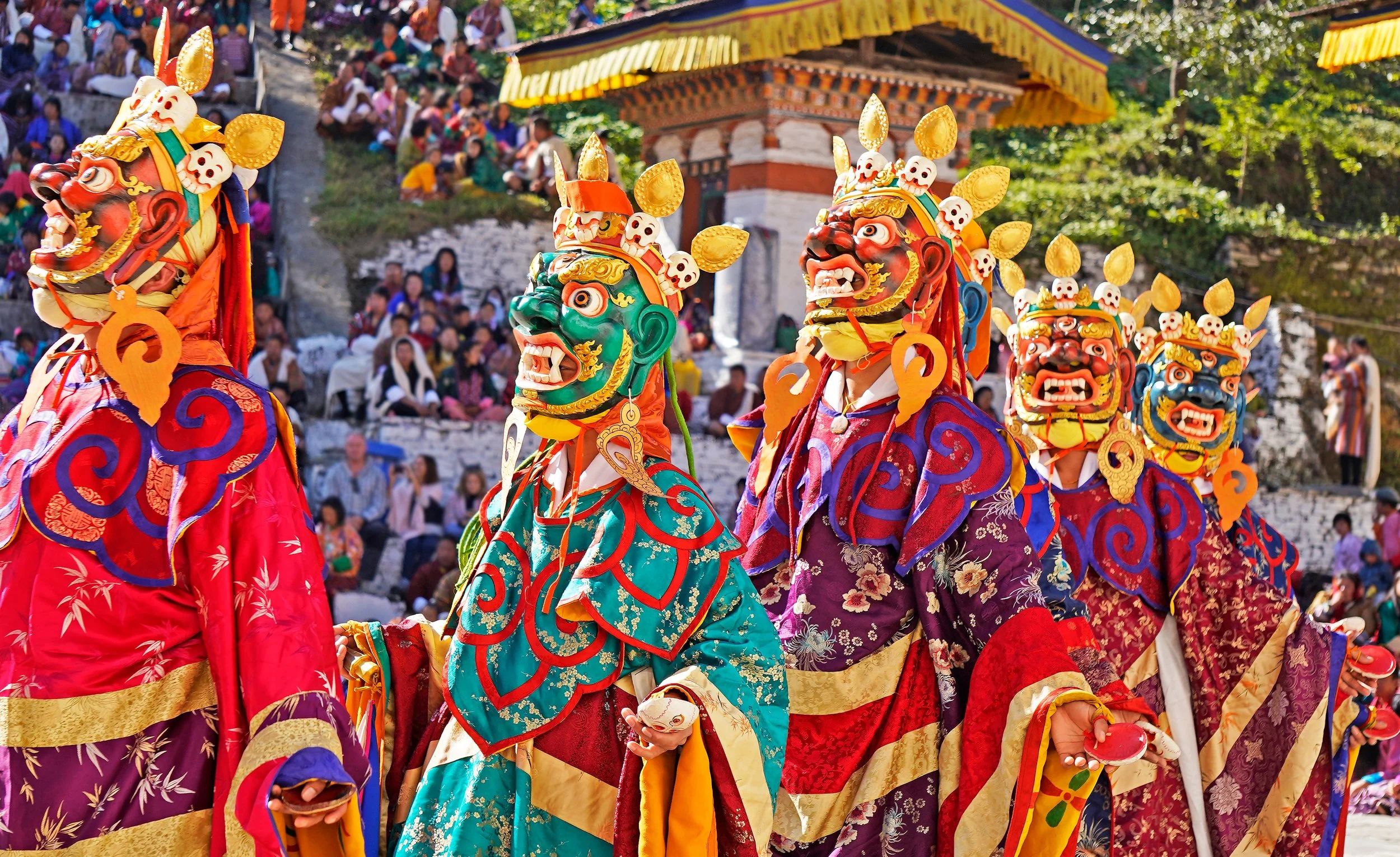
Bhutan Private Tour Packages
Bespoke Itineraries Designed For Australian Travellers
Bhutan is a land of mountains, monasteries, and timeless traditions, offering travellers a journey into a kingdom unlike any other. Nestled in the Himalayas, it is a country where ancient Buddhist practices remain deeply woven into daily life, and where dramatic landscapes set the stage for remarkable adventures. From the iconic cliffside Taktsang Monastery in Paro to the vast valleys of Bumthang and the fortress-like dzongs of Punakha and Thimphu, Bhutan reveals a living heritage at every turn.
Private tours of Bhutan can be tailored to combine cultural discovery with natural beauty, allowing time to wander through highland villages, witness colourful festivals, or trek to remote monasteries. Travellers may find themselves sharing tea with monks, crossing suspension bridges draped in prayer flags, or walking forest trails that echo with birdsong. Whether your interests lie in spirituality, history, or the dramatic landscapes of the Himalayas, Bhutan private tours offer a rewarding and intimate way to connect with the traditions and beauty of this extraordinary kingdom. At Asia Unbound, we design private journeys across Asia for Australian travellers seeking flexible, well planned experiences and genuine cultural connection.
Our Best Bhutan Tour Itineraries
Bhutan Travel Advice For First Time Visitors
-
Bhutan is unlike most destinations and requires a little preparation before you go. All travellers, apart from citizens of India, Bangladesh, and the Maldives, must obtain a visa in advance. This is arranged through an authorised operator or directly via Bhutan’s official portal, and it is linked to the daily Sustainable Development Fee (SDF) of USD 100 per person per night. The SDF helps support local communities and protect the environment, ensuring tourism remains carefully managed.
Travel to Bhutan is organised differently to many countries. Independent backpacking isn’t permitted, and visitors typically book a private tour or tailor-made itinerary with a licensed operator. These tours include a guide, driver, accommodation, and the necessary permits, which simplifies logistics while also directing revenue into local businesses and cultural preservation.
Health and safety are worth keeping in mind, especially if you plan to spend time in Bhutan’s higher valleys or on multi-day treks. Some areas reach significant elevations, so it’s best to allow time to acclimatise if hiking. Travel insurance that covers medical evacuation is strongly recommended, as hospital facilities in remote areas are limited and transfers can be challenging.
When it comes to money, Bhutan uses the Ngultrum, pegged to the Indian rupee. Cash is still the easiest way to pay in smaller towns and villages, although larger hotels and shops in cities may accept credit cards. Internet access and mobile coverage are improving, but connectivity remains patchy outside main centres, so expect limited service in rural valleys and trekking regions.
Bhutan is also a deeply spiritual nation with traditions rooted in Buddhism. Visitors should be aware of local customs, especially at monasteries and dzongs where certain areas may be off-limits or photography restricted. Respecting these rules not only shows courtesy but also enriches the experience of visiting one of the world’s most unique and culturally intact countries.
-
Bhutan doesn’t have states in the way countries like India or the United States do. Instead, it is divided into 20 districts, which are known locally as dzongkhags. Each dzongkhag is administered from a central dzong (fort-monastery) and overseen by a governor.
Some of the most well-known dzongkhags for travellers include:
Paro - home of Tiger’s Nest Monastery.
Thimphu - the capital and cultural hub.
Punakha - known for Punakha Dzong and fertile valleys.
Bumthang - Bhutan’s spiritual heartland with ancient temples.
Wangdue Phodrang - gateway to Gangtey (Phobjikha Valley).
Trongsa - historically important and centrally located.
Gasa - famous for hot springs and trekking routes.
-
The official and national language of Bhutan is Dzongkha, which literally means “language of the fortress.” It has its roots in the Tibetan family of languages and is written in the Tibetan script. Dzongkha is the language of government, administration, and public life, and it is taught in schools throughout the country. It also plays a symbolic role in reinforcing Bhutan’s cultural identity and unifying the nation’s diverse regions.
Despite Dzongkha’s official status, Bhutan is extraordinarily multilingual for such a small country. The rugged Himalayan terrain and the isolation of many valleys have allowed different communities to develop their own languages over centuries. Linguists have identified more than 19 languages and dialects across Bhutan, many of which are still in daily use. Some of the most prominent are Sharchhopkha in eastern Bhutan, spoken by the Sharchop people; Lhotshamkha (Nepali) in the south, spoken by communities of Nepali descent; and a range of Tibetan-related dialects across central and northern Bhutan.
The government actively supports the preservation of these languages as part of Bhutan’s wider policy of safeguarding intangible cultural heritage. Regional dialects are celebrated in festivals, folk songs, and storytelling, ensuring they remain vibrant even as younger generations are educated in Dzongkha and English.
English also holds a practical place in Bhutanese society. It is the medium of instruction in schools, widely used in business and administration, and the language most visitors will encounter when travelling. This makes Bhutan accessible to international travellers, while still allowing visitors to hear the living diversity of local languages as they move from valley to valley.
-
The timing of a trip to Bhutan can shape your entire experience, as the country’s landscapes and festivals change with the seasons. For most visitors, the most popular periods are spring (March to May) and autumn (September to November). These months bring clear skies, comfortable daytime temperatures, and spectacular views of the Himalayan peaks, especially from passes like Dochula and Chele La. They are also the times when many of Bhutan’s most important religious festivals, or tshechus, take place, filling dzongs and monasteries with mask dances, vibrant costumes, and communal gatherings that give travellers an intimate look at Bhutanese spirituality and culture.
Spring has its own special charm. As rhododendrons, magnolias, and wildflowers burst into bloom, valleys and hillsides come alive with colour. This makes it an especially appealing season for trekkers and nature enthusiasts. Farmers are also busy preparing fields, and villages are animated with seasonal rhythms that provide authentic glimpses of local life.
Autumn is equally rewarding, with crisp, cool air and golden harvest landscapes. It is the best season for photography and long-distance trekking, as trails are dry and the skies are often at their clearest. Festivals like the Thimphu Tshechu and Jambay Lhakhang Drup in Bumthang draw both locals and visitors, showcasing centuries-old traditions in dramatic settings.
Winter (December to February) tends to be cold in the highlands, with snow occasionally closing passes, but this season has its rewards. The valleys are quieter, offering a sense of intimacy and calm. Lower-altitude regions such as Punakha remain relatively mild, and birdwatchers flock to Phobjikha Valley to see the endangered black-necked cranes that migrate here each year.
Summer (June to August) coincides with the monsoon. Rain is more frequent, especially in the southern and eastern regions, but this is when the countryside is at its greenest. Terraced fields glow with rice, rivers run full, and fewer tourists mean a more personal experience. While mountain views may be less reliable, those who don’t mind rain showers find this an atmospheric and rewarding time to visit.
-
In Bhutan, the way you dress plays an important role in showing respect for the country’s deep cultural and religious traditions. The Bhutanese national dress is compulsory for citizens when attending school, government offices, or festivals, but visitors are not expected to follow this custom. Still, travellers are encouraged to dress modestly, particularly when visiting religious sites such as monasteries, temples, and dzongs. Clothing that covers shoulders, arms, and legs is considered appropriate, and you will often find that local guides gently remind visitors of these expectations before entering sacred places.
When you step into a temple or monastery, additional etiquette applies. Hats must always be removed, and shoes are taken off before going inside. Carrying a light jacket, shawl, or scarf is a simple way to ensure you can cover up quickly if needed. This is especially practical for women, as some sites require more conservative attire. These small gestures of respect are highly valued by Bhutanese hosts and enhance the sense of connection you will feel during your journey.
Outside religious and formal settings, Bhutan is more relaxed. In towns like Thimphu or Paro, casual Western clothing is perfectly acceptable, and you will see a mix of locals in national dress and travellers in everyday attire. Even so, the Bhutanese culture places importance on neatness and dignity, so it is best to avoid shorts, tank tops, or very revealing clothing. Dressing with a little extra care tends to make interactions with local people warmer and more welcoming.
During festivals, many travellers choose to wear Bhutan’s traditional dress - the gho for men or the kira for women - which can often be rented or purchased in larger towns. Wearing these garments is not only a respectful gesture but also an immersive cultural experience. Locals are usually delighted to see visitors in their traditional attire and are quick to offer help with arranging the pleats or tying the belts correctly.
By dressing modestly and thoughtfully, you not only show consideration for Bhutanese customs but also enhance your own travel experience. Respectful clothing opens doors - both literally and figuratively - by allowing you to enter sacred spaces with ease and engage more deeply with the people and culture of Bhutan.
-
Food in Bhutan is distinctive, hearty, and shaped by the country’s climate and culture. The national dish is ema datshi, a spicy mix of chillies and local cheese, often served with red rice. Variations such as kewa datshi (potatoes with cheese and chillies) and shamu datshi (mushrooms with cheese) are also common and showcase Bhutan’s love of fiery flavours.
Another staple is Bhutanese red rice, which has a nutty taste and is grown in the fertile valleys. It accompanies most meals and pairs well with spicy curries and stews. Meat dishes are also popular, with pork, beef, and chicken cooked in rich gravies, while dried yak meat is a specialty in higher mountain regions.
Vegetarians will find plenty of choice, as many dishes centre around potatoes, mushrooms, beans, and green vegetables, often cooked with cheese or chilli. Seasonal produce is fresh and locally sourced, giving Bhutanese cuisine a wholesome, farm-to-table character.
For something more unique, try momos, steamed dumplings filled with meat, cheese, or vegetables, often served with chilli dipping sauce. Soups and stews, such as phaksha paa (pork with red chillies) and jasha maru (spicy chicken), are warming and deeply satisfying, particularly in cooler months.
Butter tea, or suja, is another Bhutanese staple. Made with tea leaves, butter, and salt, it’s an acquired taste but deeply traditional and often shared in monasteries or family homes. Sweet milk tea is also common and more familiar to international palates.
-
The ideal length of time to spend in Bhutan depends very much on what you hope to see and experience. Because tourism here is carefully managed and travel between valleys often takes longer than expected due to winding mountain roads, allowing enough days is essential. For many travellers, a visit of one week to ten days provides the perfect balance, covering Bhutan’s best-known highlights while leaving time for meaningful encounters.
If your schedule is limited to four or five days, you can still enjoy a rewarding introduction to Bhutan. Most short trips focus on Paro and Thimphu, the country’s gateway and capital, with a day excursion to Punakha. This gives you time to explore monasteries, stroll through local markets, and of course hike up to Tiger’s Nest Monastery, which for many is the defining Bhutanese experience. Though the pace is brisk, even a short stay reveals the country’s unique blend of spirituality and dramatic landscapes.
Travelling for seven to ten days opens up more possibilities. You can linger longer in the western valleys, exploring not only Paro, Thimphu, and Punakha but also making time for the Haa Valley or the Phobjikha Valley (Gangtey). With a week or more, you can weave in cultural experiences such as attending a monastery ceremony, joining locals at a colourful tshechu (festival), or taking easy hikes between villages and temples. This itinerary suits those who want a fuller picture of Bhutan without venturing too far into remote regions.
Those who can spend two weeks or more will be rewarded with a deeper journey into the kingdom. With this much time, you can venture beyond western Bhutan to central districts such as Trongsa and Bumthang, the spiritual heartland filled with centuries-old monasteries and sacred sites. Longer stays also make it possible to include multi-day treks, from gentle valley walks to challenging high-altitude routes, which bring you closer to Bhutan’s pristine wilderness. Two weeks allow for a slower rhythm, letting travellers appreciate village life, local crafts, and the quiet pace of the countryside.
In short, four to five days offers a taste, seven to ten days creates balance, and two weeks or more gives depth. The best choice comes down to how much time you can allow, but every itinerary in Bhutan delivers a rich and memorable experience thanks to its landscapes, traditions, and the warmth of its people.
-
Yes, you can combine a private tour of Bhutan with another country, and in fact many travellers do so since Bhutan pairs well with several nearby destinations. The most common gateway is India, as Bhutan’s only international airport at Paro connects directly with major Indian cities such as Delhi, Kolkata, Guwahati, and Bagdogra. This makes it easy to combine Bhutan with the cultural riches of Rajasthan, the Himalayas of Himachal Pradesh, or even a short Golden Triangle circuit.
Bhutan also has direct flights to Nepal, most notably Kathmandu. Many visitors choose to combine the two Himalayan kingdoms - experiencing Nepal’s bustling trekking trails, Hindu and Buddhist heritage, and vibrant city life alongside Bhutan’s more tranquil landscapes and living monasteries.
Other regional hubs served by flights from Paro include Bangkok (Thailand) and Singapore, which allow travellers to link Bhutan with South East Asia. Bangkok in particular is a popular transit point, making it possible to combine Bhutan with a beach holiday in Thailand or onward travel across the region.
Because Bhutan’s flights are limited and highly dependent on weather, it’s best to plan combinations carefully, building in buffer time for connections. A private tour operator like Asia Unbound can arrange smooth transfers, ensuring your journey flows seamlessly between countries.
Popular Places To Visit In Bhutan
Plan Your Bhutan Itinerary With Asia Unbound
Established in 2007, Unbound Travel Group is a collection of tourism brands specialising in highly curated private touring and small group journeys throughout Asia. With more than two decades of experience, we create bespoke itineraries for discerning travellers looking for a real adventure. Based in Australia, our team uses our on-the-ground experience and first-hand knowledge to carefully curate experiences that are innovative and authentic.
When you start to research a trip to Asia, it’s easy to feel overwhelmed by the seemingly endless possibilities, especially if you don’t want to join a group tour. At Asia Unbound, we’ve made this process easy. We simply need you to tell us relevant information about yourself and the type of travel experience you are looking for - whether it’s a wish list of places you want to visit, a style of travel, a particular interest or theme that you want to explore, or all of these factors. Using this information, we curate a custom-made Asia private tour just for you. It’s that simple.
Bhutan Hotel Recommendations










